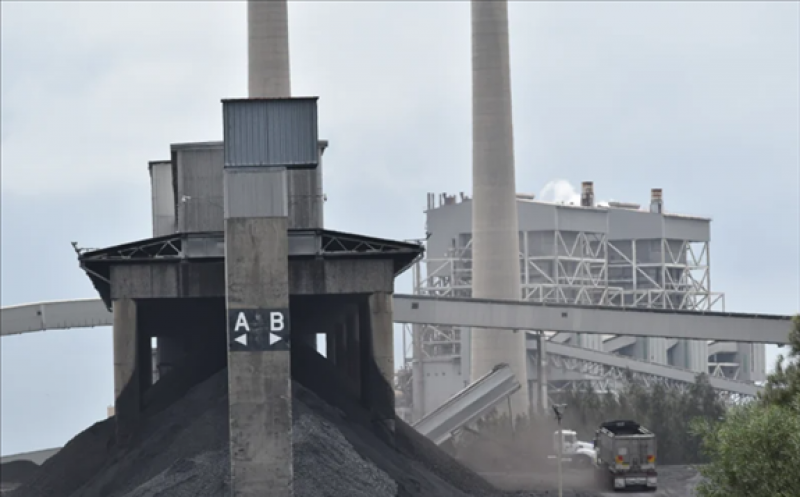The future of NSW’s coal-fired power plants is under increasing threat from cheap renewable energy, which this week forced Victoria’s Yallourn coal plant to bring forward its closure date as analysts warn the end may come even sooner.

Analysts identified particular economic risk for Vales Point coal power near Newcastle, the same region where NSW Energy Minister Matt Kean will today announce a $70 million fund to grow a green hydrogen industry, which he said would bring jobs and growth to the region.
Goldman Sachs said Vales Point, backed by energy mogul Trevor St Baker, was facing “closure potential”. The power station’s end of technical life is set for 2029.
“With only an approximately seven-year operating life now remaining, and a very weak wholesale electricity forward curve, we believe Yallourn’s permanent exit may still be even earlier than now planned,” Goldman Sachs analyst Baden Moore said.
“In our view, the risk of accelerating coal generation closures is increasing as the market makes room for the rapid addition of renewable generation.”
EnergyAustralia announced on Wednesday its Yallourn coal plant would close in 2028, four years ahead of the previous deadline. Energy analysts said the renewables-led collapse in average prices across the nation’s electricity grid was so severe that the 1480-megawatt facility supplying up to 22 per cent of the state’s power could close even sooner than expected.
Delta Electricity knocked back in February a $9 million government grant to upgrade one of the plant’s turbines. Managing director Greg Everett said the decision was not due to plans for an early closure, but rather the grant approval process and timing did not meet the company’s own timeline for having works completed.
He dismissed the suggestion that Vales Point would close earlier than 2029, particularly given the impending closure of its near neighbour, Liddell Power Station, in 2023.
The black coal burned at Vales Point is more expensive than Yallourn’s brown coal, Mr Everett said, but Vales Point could be run with more flexibility to quickly ramp output up or down to better match demand limit production costs.
But Tom Allen, director of Australian energy and utilities research with UBS, said the market’s focus would be on the long-term viability of black coal-fired generators in NSW, particularly amid the NSW government’s plan to ramp up renewable energy investment, which will place prices under further pressure.
“The black coal operators run at a much higher short-run marginal cost and so those nearing the end of their technical lives may be re-evaluating their closure dates,” Mr Allen said.
NSW has committed to reach net zero greenhouse gas emissions, and the Hunter region is zoned for renewable energy development to help reach the goal.
Mr Kean will say the region has strong potential for green hydrogen, fuelled by renewable power sources, due to its access to existing energy infrastructure, sustainable water sources, ports and logistics.
“The Hunter Hydrogen Hub will drive new low carbon jobs and help to set up the region for the future,” Mr Kean will say.
“By 2050, green hydrogen has the potential to drive $350 billion in investment across Australia in current dollars and up to $26 billion per year in additional GDP, supporting the emergence of new decarbonised industries such as green steel and ammonia.”
Victoria Energy Policy Centre director Bruce Mountain said the Victorian government had struck an “entirely sensible deal” with EnergyAustralia to bring forward closure at Yallourn, which provided a long lead time of seven years for the market to fill gaps in power supply by 2028.
The owners of the Hazelwood coal plant in the Latrobe valley only provided five months notice ahead of its closure in 2017, which delivered a big blow to the workforce and Victoria’s power prices.
Coal plants list deadlines when their operating life is set to cease, but Dr Mountain said Victoria has secured a valuable guarantee that Yallourn will be available to produce until 2028, and if the company brings forward closure the state will receive compensation.
Australia is positioning itself to tap the potential boom in hydrogen fuel, if it’s adopted globally as a replacement for petroleum.
Federal Energy and Emissions Reduction Minister Angus Taylor said last month that the industry’s potential “cannot be ignored” and argued that Australia can attract $70 billion of investments over the next decade.
On the international front the Morrison government has committed $70 million to help develop a regional hydrogen export hub, and Australia has signed agreements with Japan, Korea, Germany and Singapore to investigate hydrogen supply chains.
At home, the National Energy Resources Australia is offering $1.7 million in seed funding for hydrogen business to set up industry hubs, the Clean Energy Finance Corporation has a $300 million fund for hydrogen projects - including those powered by fossil fuels, and the Australian Renewable Energy Agency has $70 million available for green hydrogen projects.
This article is reproduced at www.smh.com.au